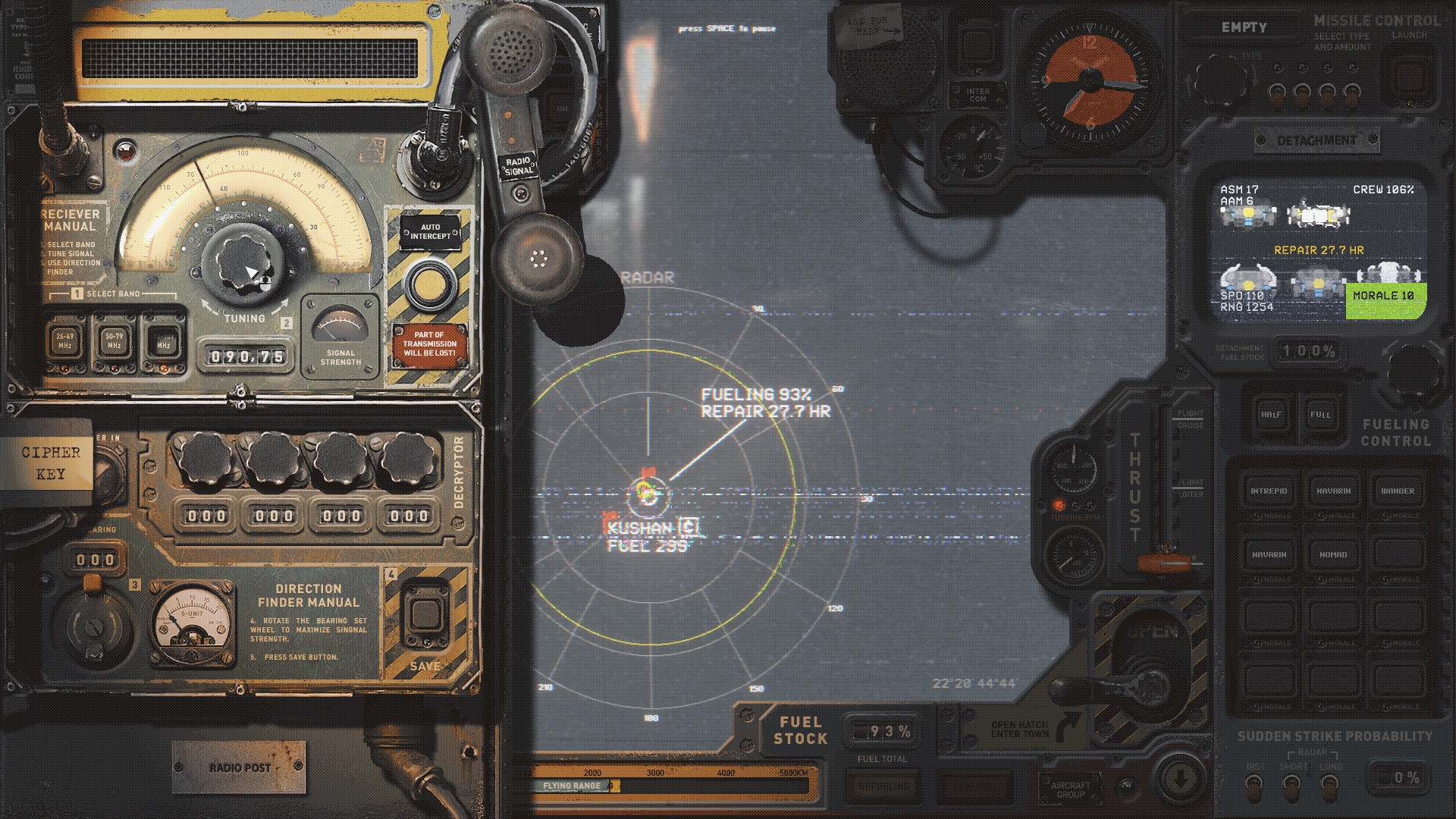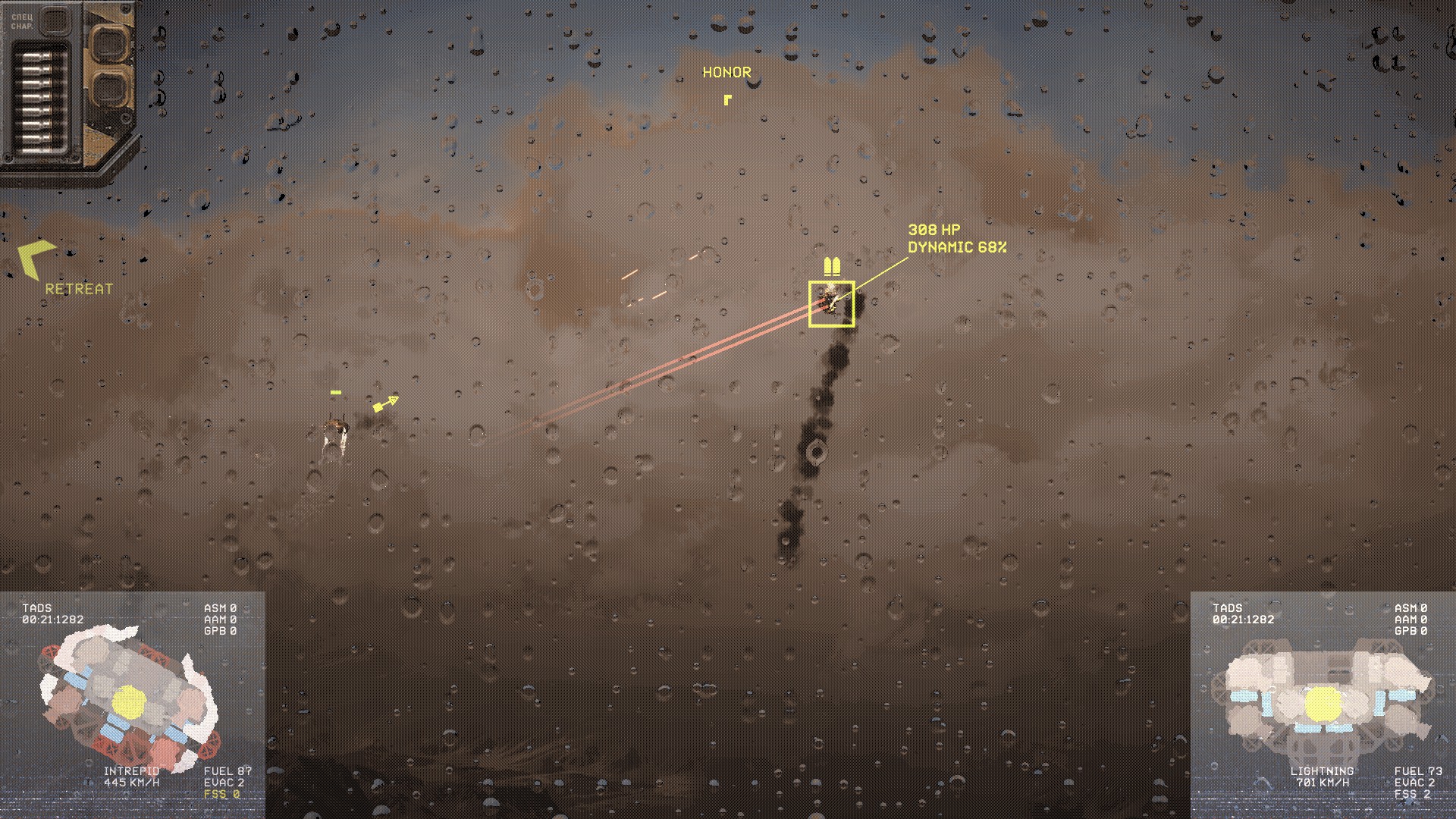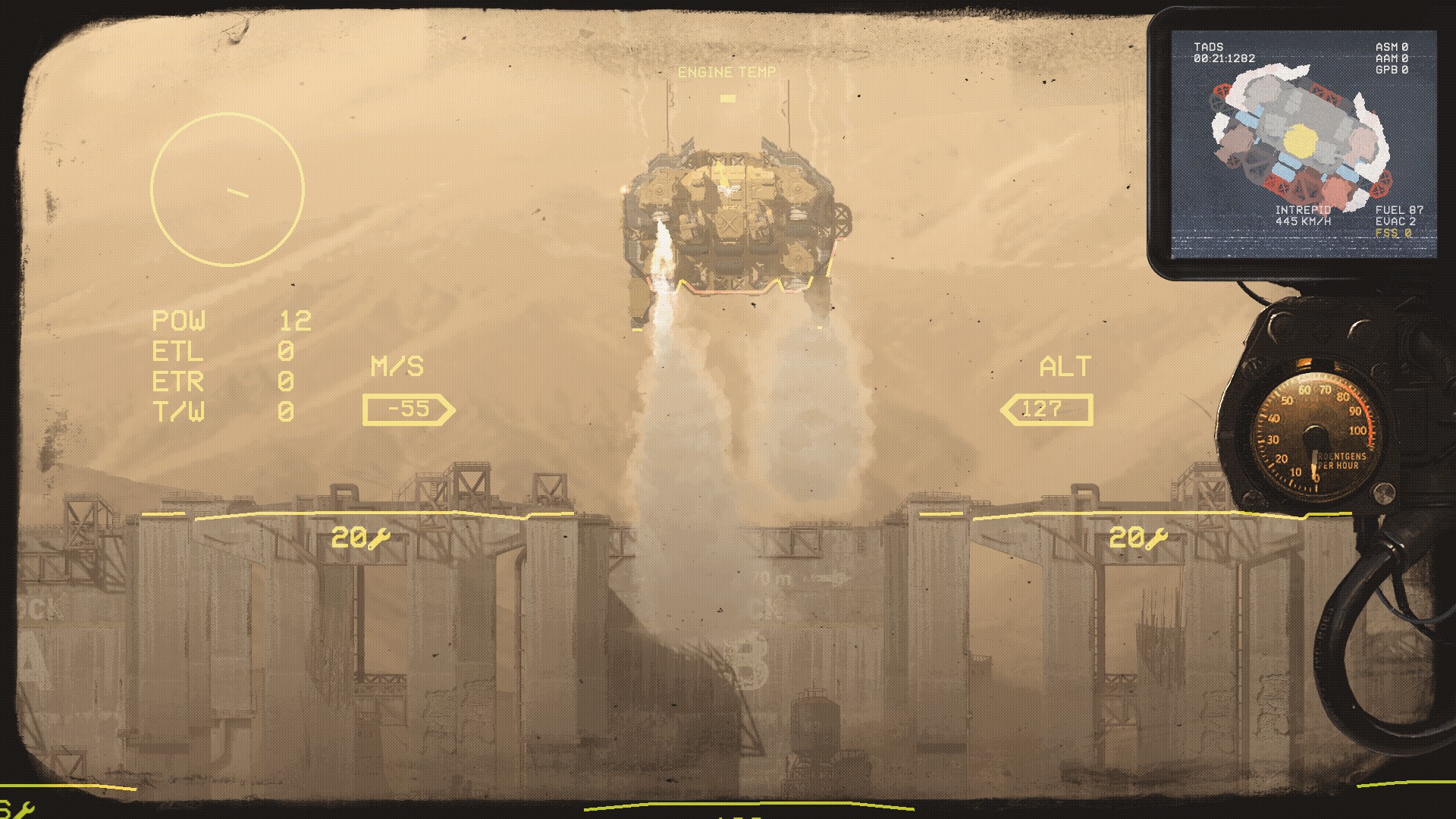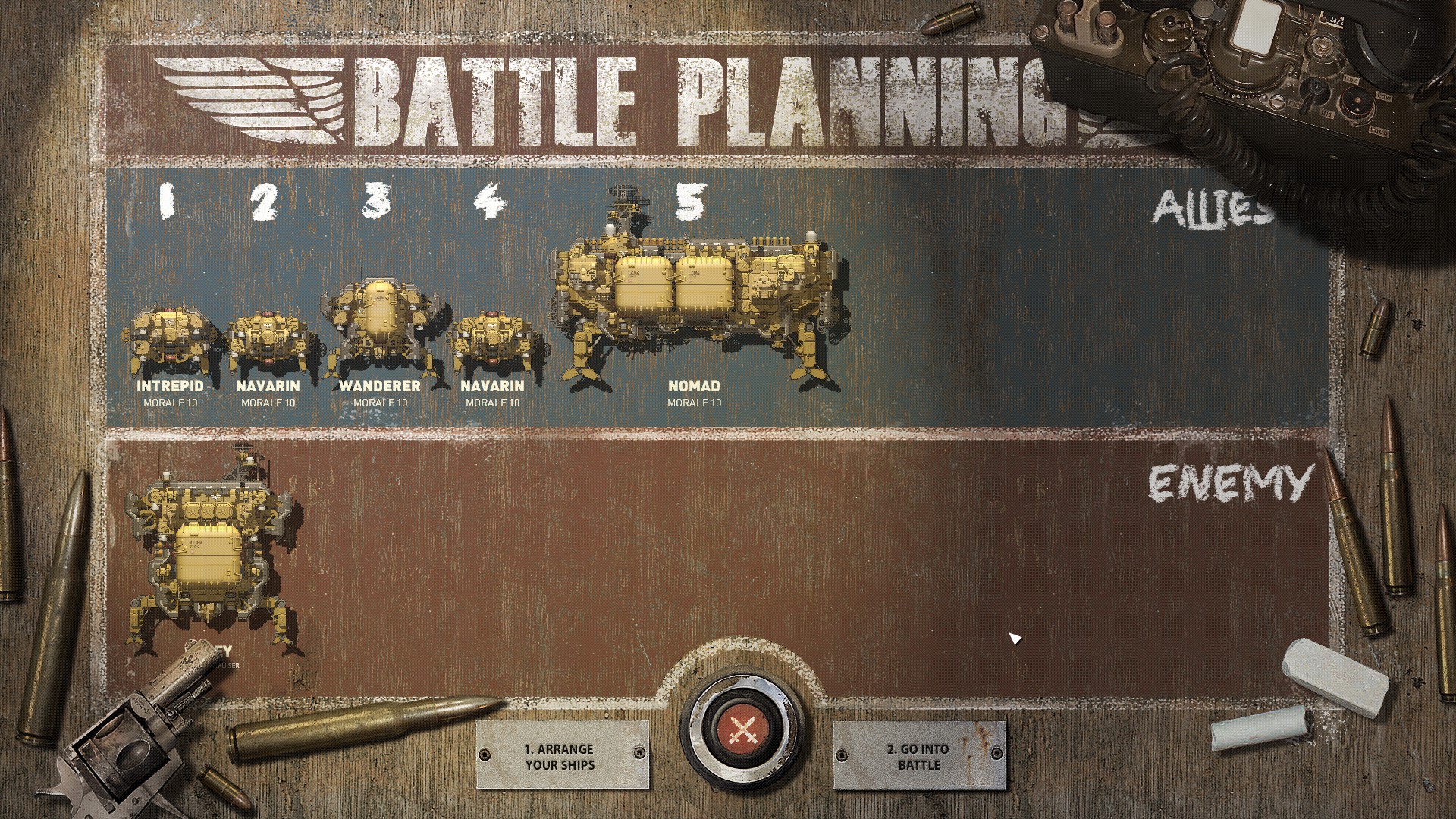HighFleet review
What is it? A complicated action-strategy hybrid with gravity defying behemoths.
Expect to pay £23.79/$27
Release Out now
Developer Konstantin Koshutin
Publisher Microprose
Multiplayer? No
Link Official site
Ask me what my favorite game of all time is, and on most days I'll answer Sid Meier's Pirates!, the genre hybrid and rollicking adventure published by Microprose in 1987. Microprose was a software company famous for simulations, strategy/wargames, and occasionally genre-bending experiments. That brand has recently been resurrected, and while most of the announced games are tilted toward traditional wargames, they're also releasing the hybrid HighFleet, described as a far-future action-strategy game involving airships fighting a civil war during the death of an empire.
The narrative of what you do in HighFleet sounds mesmerizing. You negotiate with local warlords for alliances! Crack codes! Design new ships! Fly them around in intense combat, dodging bullets and launching missiles! HighFleet is also cleverly put together, with a diegetic interface that has you accessing the different parts of the game experience through the window of your flagship. Want to intercept a message? Click the phone receiver at the top of the screen to get into the radio interface, then use your mouse-wheel to turn the dials and find the signals.
In other words, HighFleet feels like it's the product of a singular vision, consistently styled and with systems that all seem to fit together and channel players into its mindset. Under most circumstances, this is something I'd happily recommend as unique and exciting. There's just one small problem:
I hate this game.

There's a cliché about game reviews where if a reviewer doesn't like a game, but it seems to be the sort of game that other people might like, they say it's "sure to please fans of the genre." But that's not me. For one thing, there isn't really a genre like this. For another, if there was a genre we could squeeze HighFleet into, it would be right next to Sid Meier's Pirates!, my favorite game. So I am, in theory, that fan of the genre.
Just as HighFleet is bursting with systems, Pirates! was packed with mini-games that, tied together, created a story of swashbuckling pirates swinging across galleon decks to duel evil Spaniards and woo governors' daughters. These mini-games were fun! With one exception: In the original 1987 version, if you were lost in the Caribbean, you didn't just pull up an in-game map. No, that version of Pirates! had an astrolabe mini-game, where you'd use the historical device to figure out your longitude and latitude, and then look at a map in the manual. It was terrible—so it got removed from the version of Pirates! you've probably seen.
The core problem with HighFleet is that every mini-game has astrolabe-like obstacles. I get a tutorial that has me learn how to intercept transmissions, for instance, but once I start intercepting those transmissions on my own I have no idea what they do or mean. There's a whole system for launching stealth attacks, but I can barely even see how or why that matters. Some of this is down to a poor tutorial, where you're taught things you can do without learning why. But the confusion doesn't exactly abate in the main campaign. Every new system I encounter adds to my confusion, not my fantasy of playing as an airship commander—except the card and dialogue-based diplomacy system, which is straightforward and effective.

Let's take the all-important combat. Your fleet has a certain number of smaller ships, like frigates and corvettes, which you control during fights. You can have several of them, but you only actually control one at a time, in a twin-stick shooter-style piece of air combat; WASD to move, mouse to aim and then fire, with afterburners and missiles and flares and so on. There can be multiple enemies on-screen at a time, but it's only ever just your one ship which, when it gets destroyed or retreats, is replaced by the next one in your list, until every ship's taken care of.
Combat looks and feels great. There's neat weather effects, like raindrops hitting your viewscreen, wailing music to fit the Russian/west Asian vibe of the game, and booming gunshots. Controlling the ships is a constant tug-of-war with gravity, and reload times and ship damage are just on the edge of difficult and frustrating. The act of fighting fits the game nicely.
The problem is everything else associated with combat—the connective tissue. There's a massive dearth of information about what combat actually means. Is it OK to lose ships? HighFleet doesn't really have an answer until you've achieved some level of competence and expertise. Ships have crews which can be saved if you're losing the ship, and you'll get a marker of how many of them were saved at the end of a fight, but not what crews actually do, or how to replenish them systematically.

The strategic level of dealing with combat is off-putting as well. HighFleet provides a tutorial for how to launch ships away from your fleet to fight on their own, but either I lost most of the ones I sent off or I couldn't figure out how to call them back—only landing my flagship in the same place as them seemed to work. Ships take damage and can be repaired and customized in a shipyard, but this takes time and money, and it's unclear when the risk is worth the reward. And then there's the nightmare of landing ships, one-by-one, in specific docking areas for slight repair advantages.
In other words, I feel like I never have any idea whether I did well, well enough, or disastrously in any given combat. HighFleet also operates as an ironman game with a single consistently updating auto-save, except for immediately after combat when you have the chance to fight the whole battle again. Which means that after every combat I have to decide, without strategic context, whether I need to try this again.
The act of playing HighFleet is like having a bunch of alarms going off telling you're in big trouble, but you don't know what the alarms are for or why they're blaring. It's like getting a hot take retweeted by a famous person on Twitter: suddenly everything you do is wrong and there's no way to calm anything down.

Under most circumstances, this would still be something I could work through—with experimental games like this, there's an expectation that there will be moments of confusion as you try to unpack its complexities. But there's one other tiny problem: HighFleet is hard, or at least feels hard, and more importantly, it doesn't have any kind of difficulty settings. It's a simple, vicious cycle of fighting, replaying fights, becoming increasingly frustrated, and then finding more fights to lose. It's all a constant stream of irritations and stress without relief.
You might have the patience to puzzle out these systems. The clever interface and appealing style may bring you in and inspire you to figure out what each part of it means. Maybe you're a twin-stick jockey, and combat makes perfect sense to you. There are lots of components that could appeal to the imaginary player in my head…but that player isn't me. The me who actually played this game cannot wait to be done with it.

Post a Comment